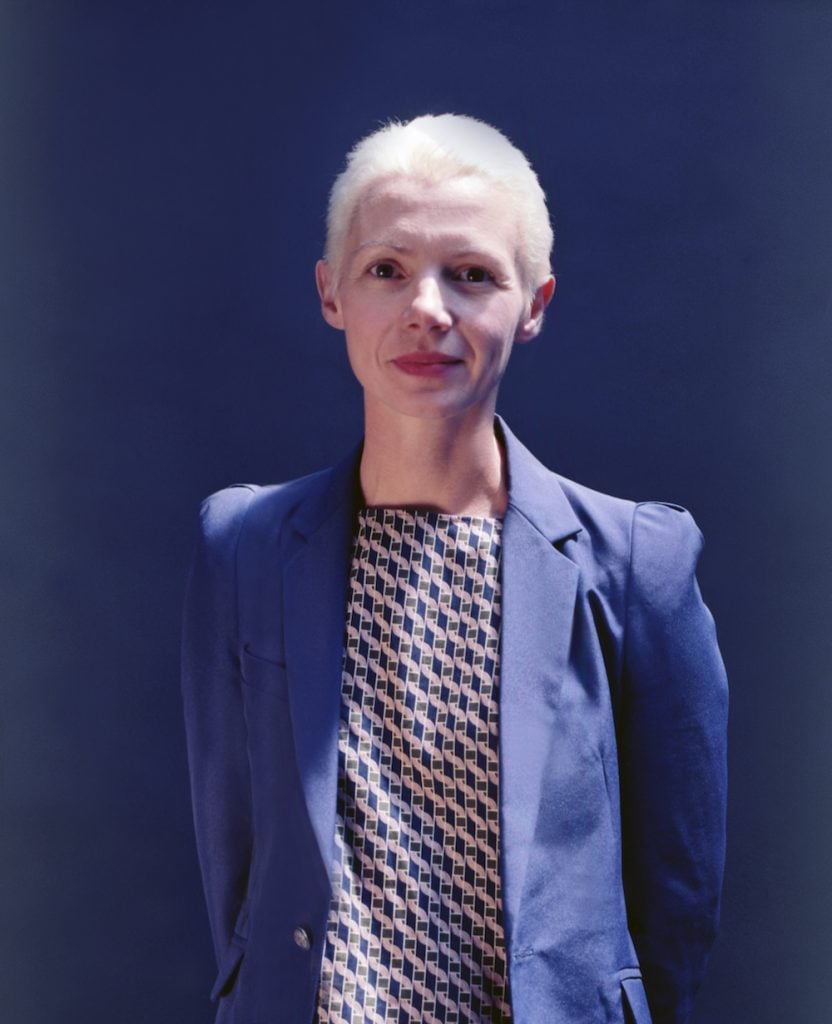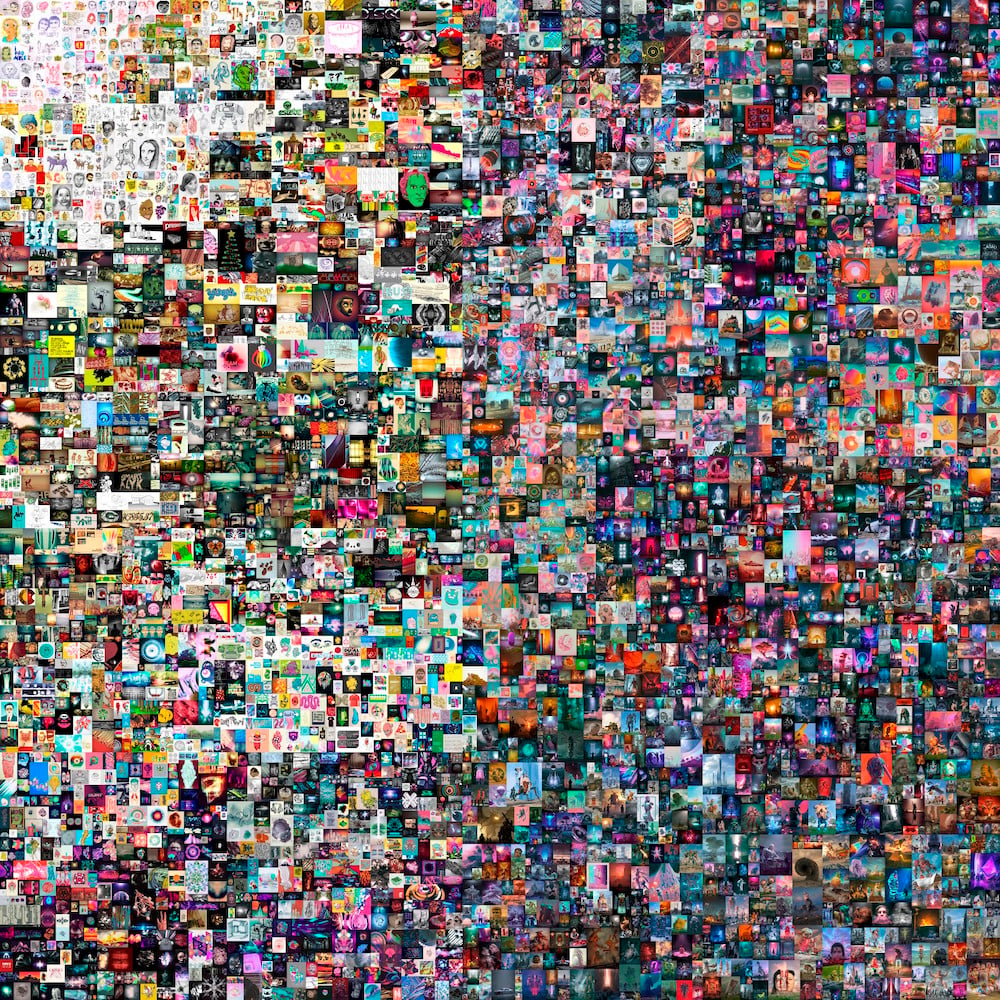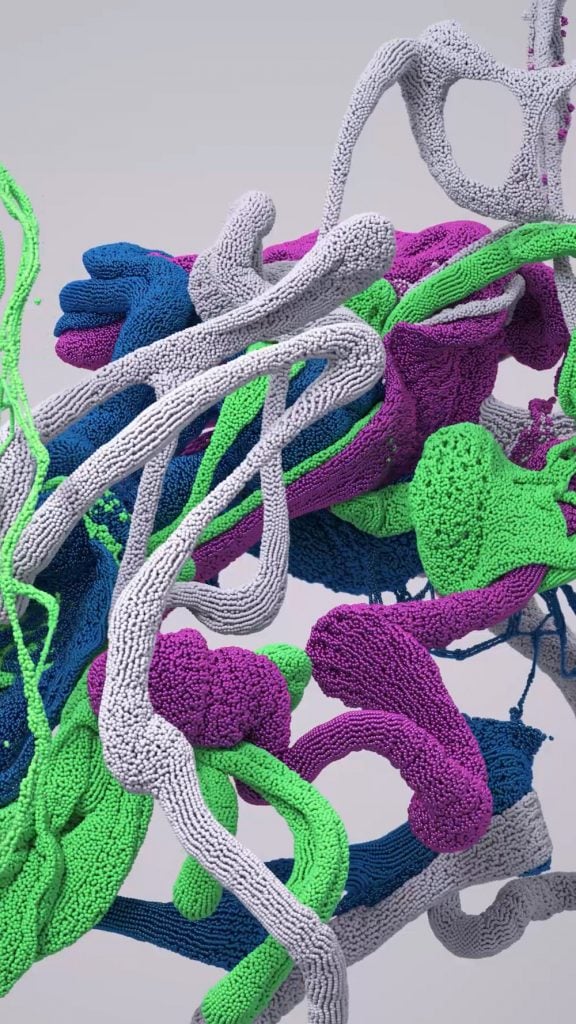Market
James Murdoch Is Backing a Start-Up That Will Allow Collectors to Buy NFT Art From Galleries Using Old-Fashioned Fiat
Blockchain.art seeks to provide a seamless and happy marriage for NFTs and the art world.

Blockchain.art seeks to provide a seamless and happy marriage for NFTs and the art world.

Eileen Kinsella

The warp speed with which NFTs seem to have taken over the art world this year was a surprise to many, but not to Christina Steinbrecher-Pfandt.
The cofounder of the Vienna Contemporary art fair has had her eye on a space that has been occupied by digital-art aficionados and cryptocurrency enthusiasts for some time now. In 2019, well before the current craze for NFTs—unique digital tokens encrypted with an artist’s “signature” and individually identified on a blockchain—took hold, Steinbrecher-Pfandt founded Blockchain.art (BCA), the first NFT marketplace designed and built specifically for the needs of the art world.
As an art-world veteran, she saw the barriers to entry that longtime gallerists are experiencing as they try to support their artists experimenting with digital art and NFTs while confronting a lack of technical know-how. She has initially worked with RMRK.app on the Kusama Network to design a platform that enables art actors—galleries, museums, artists, and collectors—to list, buy, sell, and manage digital artworks. As Steinbrecher-Pfandt tells Artnet News, BCA “empowers its art market partners to sell more digital art and strengthen their online presence, securely and sustainably, while growing their collector base.”
BCA has now caught the eye—and the financial backing—of James Murdoch’s Lupa Systems and Betaworks (the venture-capital firm Lupa joined with in 2020 to invest in start-ups). BCA closed pre-seed (aka pre-launch) funding this past May with a six-figure investment that has now propelled BCA into the first phase of its public beta launch.

Beeple, Everydays – The First 5000 Days. Courtesy of the artist and Christie’s.
Murdoch’s exact investment amount was not specified, and BCA also brought in additional unnamed investors. This marks Murdoch’s second major foray into the art world. Late last year, after months of negotiation, Lupa Systems was officially approved as the new anchor shareholder of MCH Group, owner of the Art Basel fairs. Lupa Systems now holds a stake of 49 percent in the event production company.
For the first step in the partnership, the BCA team underwent Betaworks’s summer accelerator program for start-ups, called “Betacamp,” which is focused on the theme of “fix the internet.”
“Our job is, in a way, to pick the winners,” Betaworks’s general manager, Danika Laszuk, told Artnet News in a phone interview. “We invest in things that we think are interesting and have potential at the early stage,” she said.
Upon learning about BCA, she said: “We thought, OK, we have seen a lot of NFT marketplaces and those are interesting. But this is the first company that we saw that really brought together people who were steeped with professional experience in the art world, like Christina, paired with deep blockchain experts. So, bringing together those two really different points of view on the world—deep technology and professional art—to create this, that was what really interested us in making this investment.”
BCA is now working on a custom-built BCA chain in the Polkadot ecosystem, as opposed to Ethereum. Polkadot allows for exchange of a broader range of assets and is widely considered more sustainable than many other comparable platforms. John Borthwick, CEO of Betaworks, praised the technology, which “solves a major challenge for the art world by making it easy for all players to embrace NFTs without needing to ‘speak blockchain.’” Steinbrecher-Pfandt added that with so many artists either producing NFTs or eager to engage with the medium, “we wanted to make it as easy as possible for galleries to onboard.”

Still from Banz & Bowinkel, Current III 02 (2021). Courtesy of Kunst & Denker Contemporary, Dusseldorf.
Take a recent situation that Artnet News encountered in Art Basel in Switzerland. Berlin and Cologne gallery Nagel Draxler offered NFTs for the first time and found that demand was intense. However, at least some of the sales were only sewn up because the gallery offered workarounds for collectors without crypto wallets. In cases where collectors did not have cryptocurrency accounts, the gallery allowed them to pay in regular fiat and then handled the crypto end of the transaction.
Steinbrecher-Pfandt says this is an ideal scenario for BCA. “We believe that accepting regular, or fiat, currency is a way to help mass adoption of NFTs,” she explained. BCA accepts fiat through an integration with the payment platform Stripe, and from there the transaction is an automated process: “Once the payment comes in, the token and the certificate are then moved to the wallet of the client who bought it.”
Meike Denker, a partner at Kunst & Denker Contemporary in Dusseldorf, told Artnet News she is welcoming the new technology with open arms, particularly as some of the artists in her own stable are beginning to embrace digital art and NFTs, in either their pure form or incorporating them into more traditional artworks and paintings. Some of the world’s top artists are trying their hand at them.
“In the art world, everything is about trust,” Denker said, “so it’s really important to have a platform we can trust. Christina has connections everywhere. She knows the old art world and the new art world, and she’s creating something like a bridge to combine them.”
Furthermore, Denker noted, it is important for dealers and gallerists to be brought into the NFT fold, as Blockchain.art facilitates. Current platforms like Foundation—a by-invitation NFT platform—only allow the artist to work on their own.
“I’m always having discussions about what my artists are doing, whether its with collectors, curators, or museum directors about the way the artists are working,” Denker said. “Digital experimentation is a fast-growing part of that conversation.”
She added, “Christina had the idea some years ago, but we didn’t know it was going to happen so fast. Some people say it’s hype. I don’t think so. It’s here to stay, and we will all be dealing with it. It needs a platform that’s seamless.”